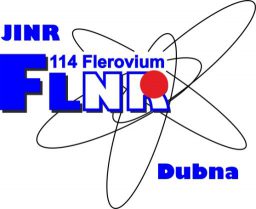SCIF-Dubna project concept (System for Fragment Correlation Studies)
06.03.2023 – FLNR Scientific Seminar, 15-30, FlerovLab Conference Hall
Knyazheva G.N., Novikov K.V., FLNR, JINR
SCIF-Dubna project concept (System for Fragment Correlation Studies)
Synthesis and study of the properties of nuclei in the vicinity of “the island of stability” situated in the region of N=184 neutron and Z=114 or Z=120-126 proton shells is one of the main problems of modern physics of superheavy elements. The use of various heavy ion reaction mechanisms opens the unique opportunity to obtain both proton-rich and neutron-reach heavy and superheavy elements. In addition to it the study of neutron-excess and neutron-deficient isotopes far from the stability line, up to the boundary of the existence of nuclei is of great interest. The use of various heavy ion reaction mechanisms opens the unique opportunity to obtain such nuclei.
SCIF-Dubna setup is intended to settle a large class of tasks related to the study of nuclear reaction mechanisms (multinucleon transfer reactions, quasi-fission, fast fission, fusion-fission, formation of evaporation residues) and properties of resulting reaction products in a wide range of charges and masses.
Modular design of SCIF-Dubna setup gives the opportunity to create a configuration of various spectrometers necessary to study a particular physical process depending on the problem. The “flexibility” of this system will make it possible to measure with good accuracy the cross sections of various processes, mass-energy, charge and angular distributions of reaction fragments and evaporation residues, as well as characteristics of accompanying radiation of light particles (g-quanta, neutrons, a-particles) and to study the structures of formed nuclei. The experimental study of all possible reaction channels will give a deeper understanding of the course of a nuclear reaction, will refine the parameters of existing theoretical models, describing the dynamics of heavy ion interaction process and widen the scope of their application both by the interaction energy and by the region of nuclei under consideration.
2. Г.Н. Княжева, К.В. Новиков, ЛЯР Концепция проекта СКИФ (Система для Корреляционных Исследований Фрагментов)Получение и исследование свойств ядер вблизи «острова стабильности», расположенного в области нейтронной N = 184 и протонной Z = 114 или Z = 120–126 оболочек, является одной из основных задач современной физики сверхтяжелых элементов. Кроме того, большой интерес представляет изучение нейтроноизбыточных и нейтронодефицитных изотопов, удаленных от линии стабильности, вплоть до границы существования ядер. Использование различных механизмов реакций с тяжелыми ионами дает уникальную возможность получать такие ядра.
Установка СКИФ предназначена для решения большого класса задач, посвященных изучению механизмов ядерных реакций (реакции многонуклонных передач, квазиделение, быстрое деление, слияние-деление, образование испарительных остатков) и свойств образующихся продуктов реакций в широком диапазоне зарядов и масс.
Установка СКИФ использует идею модульной конструкции, что позволяет создавать конфигурацию из различных спектрометров, необходимую для изучения того или иного физического процесса в зависимости от поставленной задачи. «Гибкость» данной системы позволит проводить с хорошей точностью измерения сечений различных процессов, массово-энергетических, зарядовых и угловых распределений фрагментов реакций и остатков испарения, а также характеристик сопутствующего излучения легких частиц (g-квантов, нейтронов, a-частиц) и исследовать структуры образующихся ядер. Экспериментальное изучение всех возможных каналов реакции даст более глубокое понимание о протекании ядерной реакции, позволит уточнить параметры существующих теоретических моделей, описывающих динамику процесса взаимодействия тяжелых ионов, и расширить область их применения как по энергии взаимодействия, так и по области рассматриваемых ядер.
